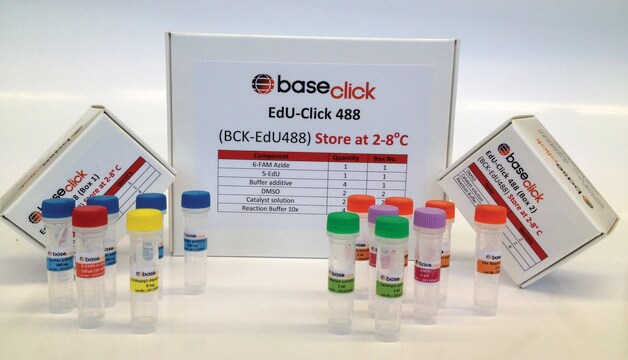16-228
Przeciwciało przeciw kortaktynie (p80/85), klon 4F11, Alexa Fluor™ 488
clone 4F11, Upstate®, from mouse
About This Item
Polecane produkty
pochodzenie biologiczne
mouse
Poziom jakości
białko sprzężone
ALEXA FLUOR™ 488
forma przeciwciała
purified immunoglobulin
rodzaj przeciwciała
primary antibodies
klon
4F11, monoclonal
reaktywność gatunkowa
bovine, human, mouse, rat, hamster, avian
producent / nazwa handlowa
Upstate®
metody
flow cytometry: suitable
immunocytochemistry: suitable
immunofluorescence: suitable
western blot: suitable
izotyp
IgG1
numer dostępu NCBI
numer dostępu UniProt
Warunki transportu
wet ice
informacje o genach
human ... CTTN(2017)
Specyficzność
Immunogen
Zastosowanie
Cell Structure
Cytoskeleton
Jakość
Opis wartości docelowych
Postać fizyczna
Przechowywanie i stabilność
Komentarz do analizy
Negative Control: Catalog # 16-240, Normal Mouse IgG, ALEXA FLUOR™ 488-conjugate.
Informacje prawne
Oświadczenie o zrzeczeniu się odpowiedzialności
Alexa Fluor is a registered trademark of Molecular Probes, Inc.
Nie możesz znaleźć właściwego produktu?
Wypróbuj nasz Narzędzie selektora produktów.
Kod klasy składowania
12 - Non Combustible Liquids
Klasa zagrożenia wodnego (WGK)
WGK 2
Temperatura zapłonu (°F)
Not applicable
Temperatura zapłonu (°C)
Not applicable
Certyfikaty analizy (CoA)
Poszukaj Certyfikaty analizy (CoA), wpisując numer partii/serii produktów. Numery serii i partii można znaleźć na etykiecie produktu po słowach „seria” lub „partia”.
Masz już ten produkt?
Dokumenty związane z niedawno zakupionymi produktami zostały zamieszczone w Bibliotece dokumentów.
Nasz zespół naukowców ma doświadczenie we wszystkich obszarach badań, w tym w naukach przyrodniczych, materiałoznawstwie, syntezie chemicznej, chromatografii, analityce i wielu innych dziedzinach.
Skontaktuj się z zespołem ds. pomocy technicznej





